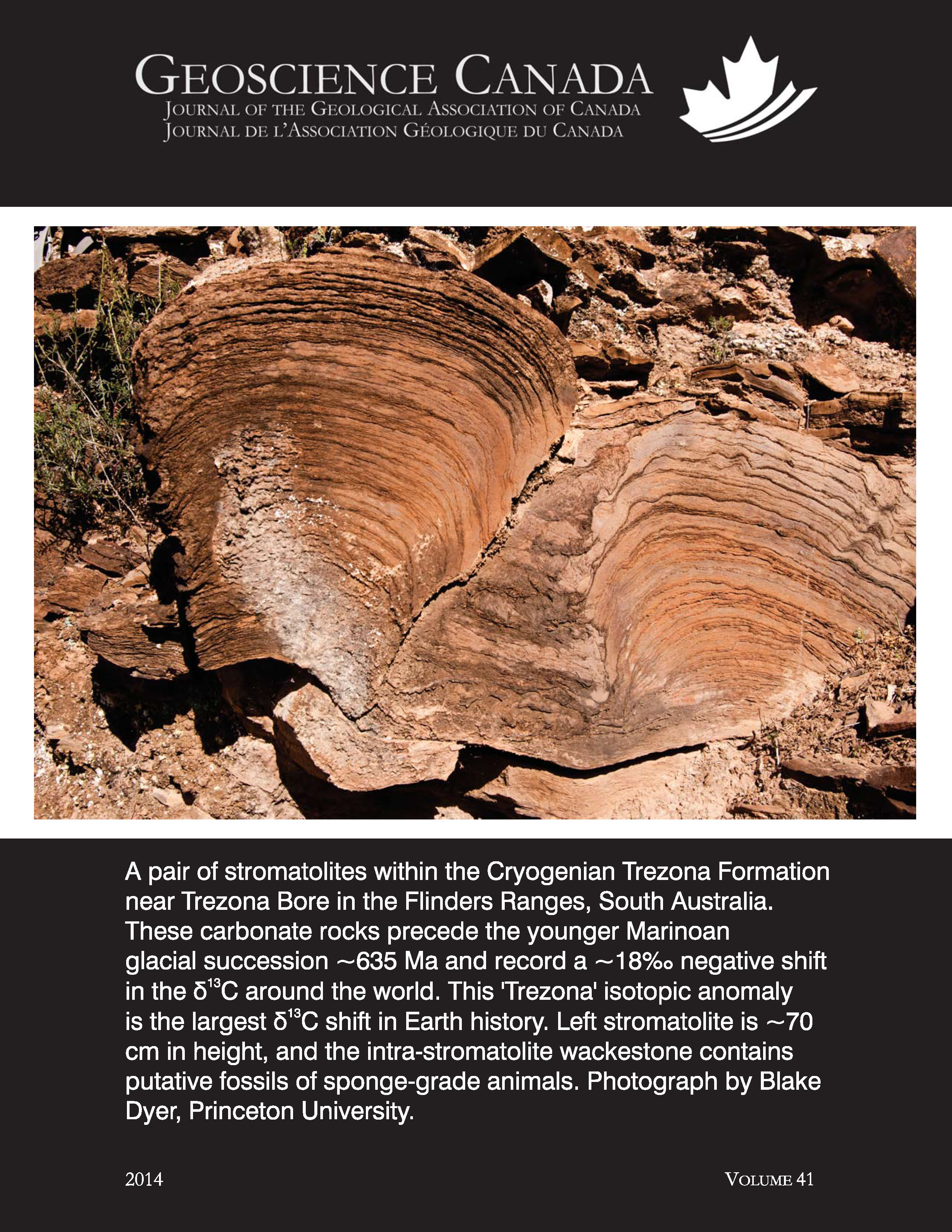Detrital Zircon Geochronology Across the Chopawamsic Fault, Western Piedmont of North-Central Virginia: Implications for the Main Iapetan Suture in the Southern Appalachian Orogen
Publié-e 2014-12-03
Comment citer
Résumé
The Chopawamsic fault potentially represents the main Iapetan suture, previously unidentified in the southern extent of the Appalachian orogen. The fault trends through the north-central portion of the western Piedmont of Virginia and separates the composite metaclastic Potomac terrane, commonly interpreted to be of Laurentian affinity, from the Chopawamsic terrane, the remains of a Middle Ordovician volcanic arc of uncertain crustal affinity. To gain insight on the first-order orogenic significance of the Chopawamsic fault, we report the results of LA–ICP–MS U–Pb analyses of 1,289 detrital zircons from 13 metasedimentary rock samples collected from both sides of the fault.
The near exclusivity of Middle Ordovician zircon grains (ca. 470 – 460 Ma) in four sampled metasedimentary rocks of the Chopawamsic Formation likely represents the detrital recycling of syndepositional Chopawamsic volcanic rocks. A subset of Cambrian and older grains hint at one or more additional, older sources.
Samples from the Potomac terrane include mostly Mesoproterozoic zircon grains and these results are consistent with previous interpretations that the metaclastic rocks are Laurentian-derived. The youngest zircons (ca. 550 – 500 Ma) and the age of cross-cutting plutons indicate that at least some parts of the Potomac terrane are Late Cambrian – Early Ordovician. The results imply temporally discrete and geographically isolated sedimentary systems during deposition of sedimentary rocks in the Chopawamsic and Potomac terranes.
Metasedimentary rocks near Storck, Virginia, previously identified as a successor basin, contain detrital zircon populations that indicate they are actually peri-Gondwanan derived metasedimentary rocks unrelated to a successor basin system; their geographic position between the Laurentian-derived Potomac terrane and the Chopawamsic terrane suggests a peri-Gondwanan affinity for the Chopawamsic arc and geographic separation of the Chopawamsic and Potomac terranes in the Middle Ordovician. Consequently, we tentatively support the hypothesis that the Chopawamsic fault system represents the main Iapetan suture in the southern Appalachian orogen.
Most detrital zircons from samples of the Arvonia successor basin crystallized in the Ordovician—Silurian or Mesoproterozoic. These data suggest that the Arvonia basin was deposited in the latest Ordovician to Early Silurian only after the Late Ordovician accretion of the Chopawamsic arc to Laurentia.
SOMMAIRE
La faille de Chopawamsic représente peut-être la principale suture japétienne, non-reconnue dans prolongement sud de l’orogène des Appalaches. La faille traverse la portion nord du centre du piedmont ouest de Virginie et sépare le terrane métaclastique de Potomac, d’affinité laurentienne pensait-on, du terrane de Chopawamsic, vestige d’un arc volcanique de l’Ordovicien moyen d’affinité crustale incertain. Afin de mettre en lumière la signification orogénique première de la faille de Chopawamsic, nous présentons les résultats d’analyses U-Pb par ICP–MS par AL sur 1 289 zircons détritiques provenant de 13 échantillons de roches métasédimentaires prélevés de chaque côté de la faille.
L’existence quasi-exclusive de grains de zircon de l’Ordovicien moyen (env. 470 – 460 Ma) dans quatre roches métasédimentaires de la Formation de Chopawamsic représente vraisemblablement le recyclage détritique des roches volcaniques synsédimentaires de Chopawamsic. Un sous-ensemble de grains cambriens et plus anciens, évoque l’existence d’une ou plusieurs sources plus anciennes additionnelles.
Les échantillons du terrane de Potomac renferment principalement des grains de zircon du Mésoprotérozoïque, ce qui correspond avec les interprétations antérieures voulant que les roches métaclastiques soient d’origine laurentienne. Les zircons les plus jeunes (env. 550 – 500 Ma) ainsi que l’âge des plutons qui recoupe l’encaissant indiquent qu’au moins certaines parties du terrane de Potomac sont de la fin du Cambrien ou du début de l’Ordovicien. Les résultats impliquent l’existence de systèmes sédimentaires distincts au cours du temps, et isolés géographiquement durant le dépôt des roches sédimentaires dans les terranes de Chopawamsic et de Potomac.
Les roches métasédimentaires près de Storck en Virginie, jadis interprétées comme bassin successeur, renferment des populations de zircons détritiques qui indiquent qu’ils proviennent en fait de roches métasédimentaires péri-gondwaniennes sans rapport avec un système de bassin successeur; leur localisation géographique entre le terrane de Potomac issu des Laurentides et le terrane de Chopawamsic porte à penser que l’arc de Chopawamsic est d’affinité péri-gondwanienne, et que les terranes de Chopawamsic et de Potomac à l’Ordovicien moyen étaient séparés géographiquement. En conséquence il nous semble justifié de proposer que le système de faille de Chopawamsic représente la principale suture japétienne dans le sud de l’orogène des Appalaches.
La plupart des zircons détritiques des échantillons du bassin successeur d’Arvonia ont cristallisés entre l’Ordovicien et le Silurien ou au Mésoprotérozoïque. Ces données suggèrent que le bassin d’Arvonia s’est rempli de la fin entre l’Ordovicien et le début du Silurien, seulement après l’accrétion de l’arc de Chopawamsic à la Laurentie, à la fin de l’Ordovicien.
